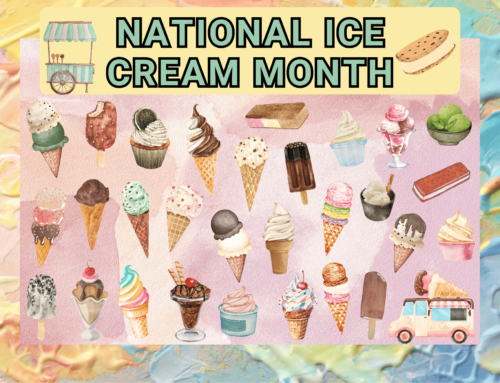Oobleck is a non-Newtonian fluid. That is, it acts like a liquid when being poured, but like a solid when a force is acting on it. You can grab it and then it will ooze out of your hands. Make enough Oobleck and you can even walk on it! Oobleck gets its name from the Dr. Seuss book Bartholomew and the Oobleck where a gooey green substance, Oobleck, fell from the sky and wreaked havoc in the kingdom. Oobleck, like the slime you like to make, is made up of polymer chains.
Polymers can be found just about everywhere – in places you might not even have realized. They are in natural materials like wool and silk (among many others), and also in many man-made synthetic materials like nylon and rubber. A rubber duckie, for example, is made of synthetic polymers. Even the double-helix strand of DNA is a form of a polymer known as a biopolymer. But what exactly is a polymer? The word polymer means “many parts.” The individual parts that actually combine to form a polymer chain are called monomers.
World Book Online Definition: Polymer, is a large molecule formed by the chemical linking of many smaller molecules into a long chain. The small molecular building units are called monomers. Monomers are joined into chains by a process of repeated linking known as polymerization. A polymer may consist of thousands of monomers. Some polymers occur naturally. Others are synthetic. One way to think of them is as a length of metal chain with each link being a monomer and when linked together they make a polymer or if you build a tower with Lego’s each Lego is a monomer and when you join then together it creates a polymer.
A chain molecule has a definite length, but, like a piece of string, it can assume a variety of shapes. This combination of molecular length and flexibility gives polymers many useful and unique properties. For example, rubber and numerous other polymers can be stretched to several times their normal length without breaking. The chains simply straighten into more extended shapes. Because of the large size of the molecules, polymers do not dissolve easily. They also have high viscosity (resistance to flowing).
We are going to make regular oobleck and fizzy oobleck to compare the two.
Experiment # 1 Oobleck: The Dr. Seuss Science Experiment
Materials
Procedure
- Start with the water in a bowl and start adding the cornstarch to it. You can use a spoon at first, but pretty quickly you’ll be moving on to using your hand to stir it up.
- When you’re getting close to adding 3/4 cups of the corn starch, start adding it in more slowly and mixing it in with your hand. The goal is to get a consistency where the Oobleck reaches a state that is the liquid and yet solid. Sometimes you will need more corn starch. If so, keep adding more than the initial 3/4 cups. If you add too much, just add some water back into it. You will have to play with it to see what feels appropriately weird.
- Now that the Oobleck is just right, it’s time to add some color. We save this step for later because it’s a fun challenge to stir in the food coloring. You will have to slowly mix the Oobleck around to get it thoroughly mixed.
- Now go ahead and play with the Oobleck. That’s the point of all this and you can find lots of tricks to try out. Here’s a short list:
-
- Grab a handful, squeeze it, and let it ooze out your fingers.
- Make a puddle and quickly drag your fingers through it.
- Put it into a plastic container and shake it or quickly bump it against a table.
- Jab at the Oobleck and then slowly let your finger sink in.
Experiment #2 Fizzy Oobleck
Materials
Procedure
- Start with the vinegar in a bowl and add a few drops of food coloring. Start adding the cornstarch to it a bit at a time. Follow all of the instructions for the regular oobleck until you have a good consistency.
- Now sprinkle 1 tablespoons of baking soda on top of your oobleck and mix it in, within around 30 seconds your oobleck should start to fizz and bubble. If you want more bubbles add the rest of the baking soda to your oobleck.
The fizzing and bubbling is caused by the chemical reaction between the vinegar and the baking soda that creates carbon dioxide which forms bubbles in the oobleck just like the carbon dioxide found in sodas and other carbonated drinks.
Resources
Web sites:
- Easy Science for Kids
- How Stuff Works
- Live Science
- Polymer Science Learning Center
- Science News for Student
- Study.com
- Wonderopolis
Videos:
- Hull University – What is Slime?
- The King of Random (This is the video that inspired this program).
- Making Polymers
- Oobleck and Non-Newtonian Fluids: Crash Course Kids
- Polymers for Kids
- Princeton University – Polymers
- Science Mom – The Science Behind Slime
- TED-Ed -From DNA to Silly Putty, the diverse world of polymers





